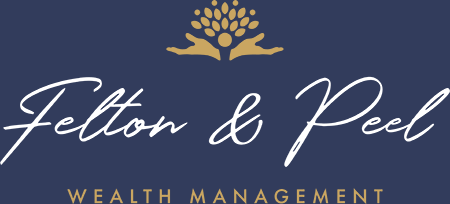
4 Things to Do with Unused 529 Plan Funds
Section 529 Plans have long been the archetypal college-savings investment vehicle for American families, and with great reason. Also known as qualified tuition programs (QTPs), 529s offer a triple tax advantage: contributions may be tax-deductible at the state level, you can enjoy tax-free growth on your contributions, and withdrawals made for qualified education expenses are not taxable. Because of their unique benefits, these plans are often the primary investment choice for parents planning their children’s college expenses.
However, there’s some gray area regarding what you can do with 529 funds that go unused. What happens if your child doesn’t attend college? If they receive a scholarship covering a significant portion of their tuition? What if there’s still a balance in the account after graduation is over and all expenses have been paid?
Good news: your 529 savings aren’t wasted. Here are four smart ways to put those unused funds to work.
1. Roll the Funds into a Roth IRA
A few months ago, we wrote about the importance of the SECURE 2.0 Act and how its changes will have trickle-down effects on many individuals’ retirement and investments. Case in point: the Act states that 529 account beneficiaries can roll over up to $35,000 of funds (a lifetime limit) into a Roth IRA tax-free, starting on January 1, 2024.
While the 529 account funds must meet specific requirements to be eligible for the rollover, such as adhering to duration (15-year minimum), contribution limit, and account beneficiary restrictions, many are attainable, making this strategy worthwhile. An added plus: the transfer has no income limitation requirements.
This change can help jump-start your child’s financial foundation for retirement purposes or otherwise. Roth funds can also be used to augment an emergency fund, purchase or build a first home, and more.
2. Repay Student Loans
With a total of $1.75 trillion in student loan debt (including both federal and private loans), the average American student graduates owing $28,950. Good thing their parents can now use 529 funds to pay off college debt!
Under the original SECURE Act, principal and interest payments toward an eligible education loan are considered qualified educational expenses. While there’s a $10,000-per-borrower lifetime limit on the amount of 529 funds that can be used for repayment, and while any interest paid this way is not eligible for the student loan interest deduction, there is a fun bonus feature: you can use 529 funds to pay off any of your children’s student loan debts, regardless of who is listed as the beneficiary. And if you have multiple children, keep that “per-borrower” caveat in mind—you can use up to $10,000 per child of 529 funds in this way.
3. Pay for K-12 Private School Tuition
Many parents would like to send their kids to private school for their Kindergarten through 12th grade education. But unfortunately, tuition for little kids is sometimes even more costly than tuition for young adults: Georgia’s average annual K-12 private school tuition is $11,500, while the University of Georgia’s in-state tuition is $11,180.
Luckily, the Tax Cuts and Jobs Act introduced changes to allow parents to use the same funds that could have been used for qualified college education expenses on K-12 education expenses. Parents can now withdraw up to $10,000 from their 529 plan annually to pay for primary and secondary school.
Like using a 529 to pay for college, this strategy still allows for the triple tax advantage described earlier. You could potentially receive a state tax break for your contribution to the 529 plan while still enjoying tax-free growth and withdrawals.
One drawback: these funds may only be used for tuition and not the other common expenses eligible for qualified college education, like room and board, books, supplies, and computer equipment. Lastly, some states do not allow 529 plan funds to be used on K-12 tuition, including New York, California, and Illinois.
4. Change the Beneficiary
Even if none of these options works for your current financial plan, don’t worry: you can always change the beneficiary to another qualifying family member without federal tax consequences. Parents can even name themselves as plan beneficiaries.
There are, however, some key factors to consider at the estate level if the asset will be skipping a generation—that is, being transferred from grandparent to grandchild. That’s because of the generation-skipping transfer tax (GSTT), a tax assessed by the IRS on gift transfers to heirs who are more than one generation below the givers. Fortunately, grandparents with estates less than $12.92M (prior to the 2025 sunset provision) will not be on the hook for this tax.
Additionally, there might be a tax obligation at the state level, so it’s essential to work closely with your financial and tax advisor to ensure a clean transfer.
We understand that planning for college and beyond can be an arduous process. Our Felton & Peel Wealth Management advisors are here to help you build a strong financial plan and customize your strategy to help you reach your college planning goals—and provide your children a bright future. Schedule a consultation with us today to get started.







